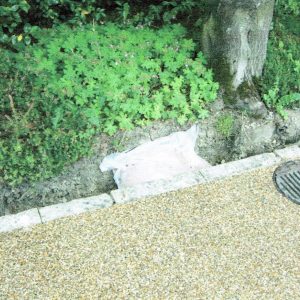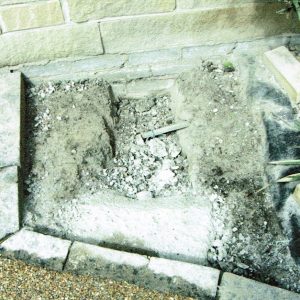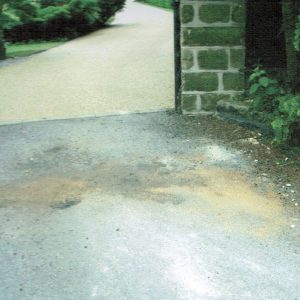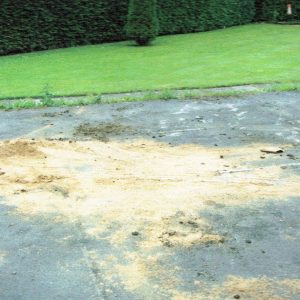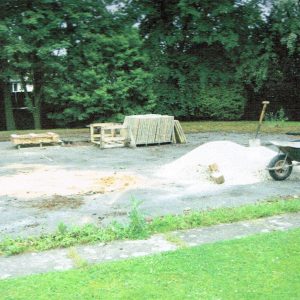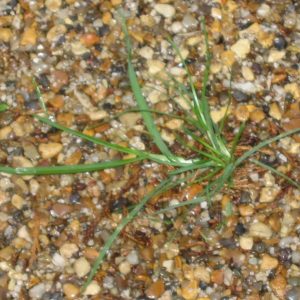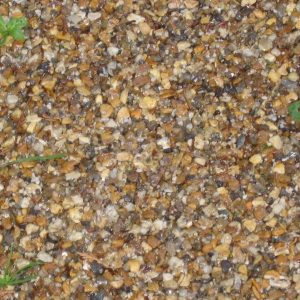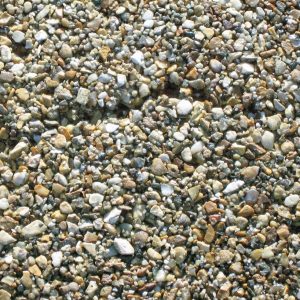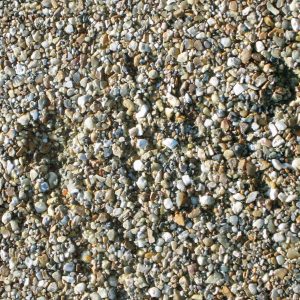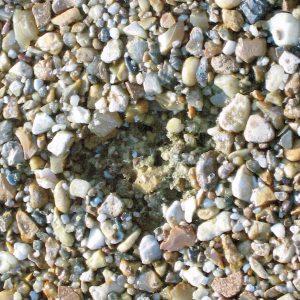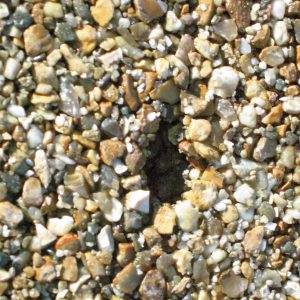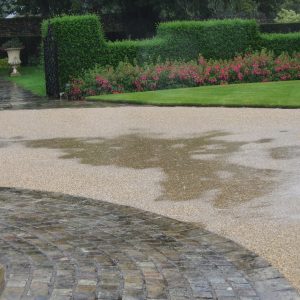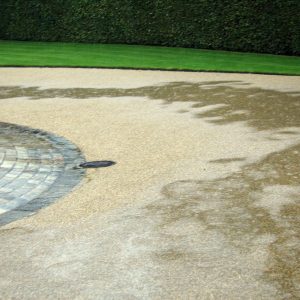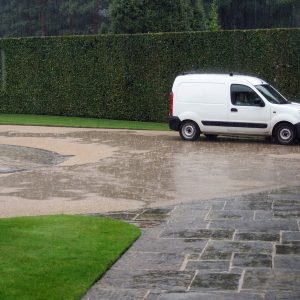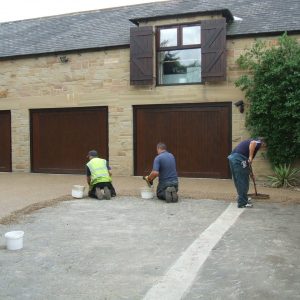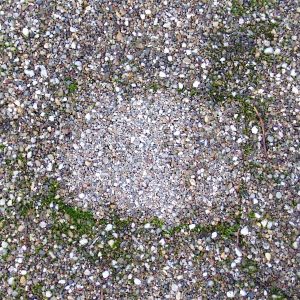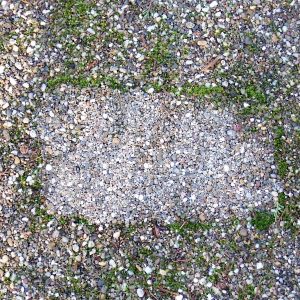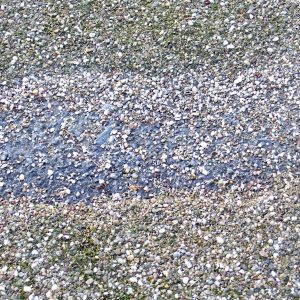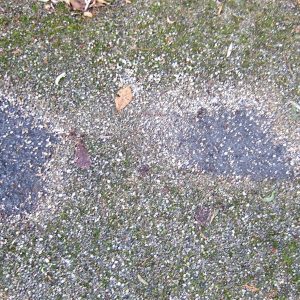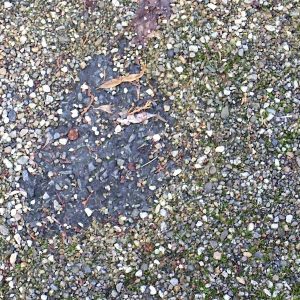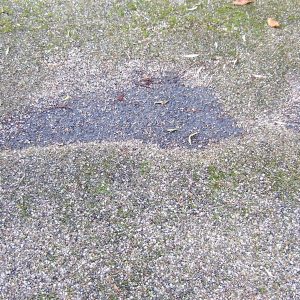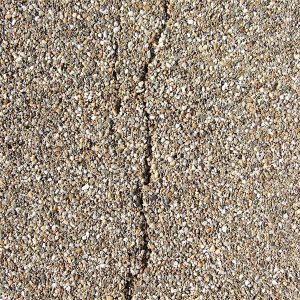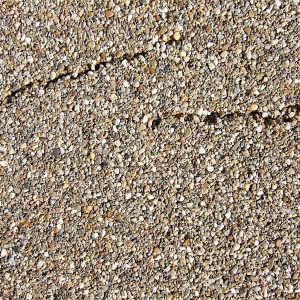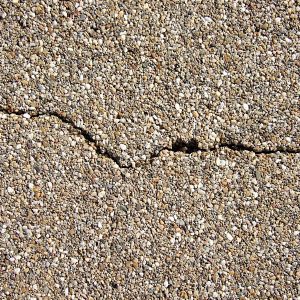The Clearmac Experience
 In their marketing material Ayton Products (a May Gurney sector) promised that their Clearmac cold-applied paving would be highly durable, hard wearing, low maintenance, and with no loose stones. They stated that it was designed for driveways and parking areas – which was exactly what we were looking for.
In their marketing material Ayton Products (a May Gurney sector) promised that their Clearmac cold-applied paving would be highly durable, hard wearing, low maintenance, and with no loose stones. They stated that it was designed for driveways and parking areas – which was exactly what we were looking for.
Ayton exampled that the same product had been used at the National History Museum, and was taking vehicles such as fire-engines without any damage to the surface. They informed us verbally that the Clearmac could be cleaned with a regular pressure washer. The brochure said not to use a high pressure washer.
Ayton’s promises, plus those from their chosen sub-contractor (Inlay Limited) convinced my late husband and me to proceed with the works – despite the high price. How I now wish that we hadn’t !
The quality and organisation of the work was absolutely dreadful, and worthy of a television saga. The stress, inconvenience, and damage to adjacent shrub beds and lawns which accompanied a catalogue of disasters was unbearable. When Inlay stated that the work had been ‘completed’ our home looked like a disaster zone.
- Bag of sand thrown into a shrubbery.
- Excavation left open, with bricks thrown amongst plants.
- The state my main entrance was left in
- Sand and rubble left on the base of the old tennis court.
- Unused heap of sand and my ruined wheelbarrow (used without my permission) left on the old tennis court base.
Even worse, the area in front of our home was already sinking, and the levels (which had previously been excellent) were such that rain water did not flow into the drains – causing huge puddles.
Inlay returned to relay this area (which is circular with a fountain in the middle), throwing their rubbish into the flower beds as they went along. The resultant levels were just as bad.
Just a few weeks later cracks began to appear in the Clearmac, and then hundreds of weeds began to spring up in this supposedly ‘maintenance free’ surface.
I wrote to Ayton Products (the manufacturers of Clearmac) who passed the buck back to their sub-contractor Inlay. Letters flew backward and forwards.
18 months after the supposed ‘completion’ more cracks and dozens of holes had appeared in the Clearmac – so I wrote to Ayton again.
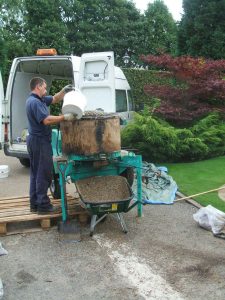 Ayton sent a representative to inspect the work, and this revealed that the Clearmac was only 3 to 4 mm deep in places (instead of the necessary 16 to 18 mm depth promised), and that the surface had not ‘cured’ and was crumbling away. The Clearmac continued to degrade rapidly all over the place. There were loose stones in abundance, being kicked up by car wheels and carried along on the bottom of shoes. Both Ayton and Inlay ignored our pleas for action/responses. Only when I employed independent consultants to report on the works, and informed the two organisations that I was putting the matter in the hands of solicitors, did I then hear back from Ayton. The General Manager said (a) that the situation we had found ourselves in was totally unacceptable (b) that Clearmac was “one of the leading such systems in the marketing terms of durability” (c) that he “guaranteed” the issue would be resolved and (d) that he proposed a meeting on site. It was particularly noticeable that he did not want the independent experts employed by us to be at the meeting. I wonder why ?
Ayton sent a representative to inspect the work, and this revealed that the Clearmac was only 3 to 4 mm deep in places (instead of the necessary 16 to 18 mm depth promised), and that the surface had not ‘cured’ and was crumbling away. The Clearmac continued to degrade rapidly all over the place. There were loose stones in abundance, being kicked up by car wheels and carried along on the bottom of shoes. Both Ayton and Inlay ignored our pleas for action/responses. Only when I employed independent consultants to report on the works, and informed the two organisations that I was putting the matter in the hands of solicitors, did I then hear back from Ayton. The General Manager said (a) that the situation we had found ourselves in was totally unacceptable (b) that Clearmac was “one of the leading such systems in the marketing terms of durability” (c) that he “guaranteed” the issue would be resolved and (d) that he proposed a meeting on site. It was particularly noticeable that he did not want the independent experts employed by us to be at the meeting. I wonder why ?
Ayton then proposed yet more remedial works, but had the nerve to say that shedding of the stone was normal, and that all similar paving products suffered the same….this despite the fact that their marketing material clearly stated that there would be “no loose stone” !
The site investigation report which we had commissioned from an independent expert was absolutely damning, and we sent it to both Ayton and Inlay. Yet again we waited many weeks for a response.
Inlay eventually replied, but only to tell us that they wanted their own ‘independent’ firm to undertake an investigative survey, and they told me that they were having the same problem with stone loss on other Clearmac jobs.
Eventually we heard again from Ayton who stated that “as there is not sufficient structural integrity in this depth to retain the aggregate in place” they were “not surprised that there is more than normal aggregate (stone) loss”. A few days later they added that they had “deduced” that areas “did not contain sufficient quantities of the fine aggregate, or if they did they were not mixed sufficiently”…..so the ball was back in their sub-contractors court.
Inlay offered to replace the Clearmac in the garage forecourt, and undertake ‘patching’ repairs on the drive, the following month.
The saga then became even more unbelievable when we were informed by Ayton that they were in a legal dispute with Inlay. Yet again we were the piggy in the middle of these two firms.
Another month passed. Inlay then advised us that, due to the legal problems with Ayton, they would be using a different resin for the rectification works – but that the stones would be the same. They sent us a sample of the stones they intended to use…they were the wrong colour !
Inlay asked for a meeting with me. Apparently the type/colour of aggregate (stones) which had been used was no longer available. They had been changed in the long period since the works first started. Therefore the repairs to certain areas would be in a different colour to the other areas. As the levels of the Clearmac to the area in front of our home were still wrong, and water was puddling badly, that area would be relaid (for a SECOND time). Needless to say there was another catch….Inlay was suffering from cash flow problems, so they asked if the rectification of that area could be delayed for some months. Wisely or not, I agreed. The relaying of the garage area commenced.
The fountain area was relaid, and the rain water STILL didn’t flow to the drains…..and it remains the same today.
The remainder of the works was delayed yet again. Inlay had employed debt collectors/solicitors to try to recover the monies owed to them by others. They were clearly in financial trouble.
My patience now exhausted I again employed independent engineers, and the independent consultant used before. I again threatened legal action against them. It was now two and half years since the works had first been ‘supposedly’ completed !
So-called ‘rectification’ works were eventually undertaken. Needless to say, the different colours of the aggregate/resin were obvious. Inlay advised that the new work would “darken slightly over time”.
3 months later the new surface was already shedding stones badly. Inlay ‘patched’ various areas (in a different colour of course) but these started to crumble away too. We informed Inlay. 4 months later we were still chasing them – but were ignored. I again threatened them with legal action and they came to inspect the problems.
Huge areas were eventually dug up again….and just left. Chunks of tarmac and the surfacing were left all over the place. Dust and loose stones were being carried into our home by shoes.
Eventually they came back, and then the work was supposed to have been ‘completed’ yet again…. 5 years and 4 months since it had first been stated as being ‘completed’. This time they had used a ‘primer’ spray over the area. They said that this would stop the surface shedding…. and they managed to get spray on my expensive solid oak gates (which they informed me could only be removed by steaming the gates) !
The surface started to shed and crack very soon thereafter, and this is what it looked like after just another 3 years.
We dare not clean the moss and dirt off vast areas of the surface because just brushing it brings away the loose surface and leaves huge gaps – some of them over 18 inches wide.
So what about my 10 year guarantee ? The company called Inlay Limited was dissolved.
Another company – called Inlay Management Services Limited – had been incorporated in the same area (Frome in Somerset) whilst Inlay Limited had been experiencing financial difficulties. Familiar names appeared on the list of Directors.
Ayton Products (now a part of the Kier Group – which had bought May Gurney in 2013) continues to promote and sell Clearmac.
So, if you are considering a resin bound surface to your driveway, parking area or footpaths instead of tarmac or other surfaces, then I really do recommend that you thoroughly investigate its performance and life-span VERY carefully. Do not make the same mistakes that we did.
June 2017
